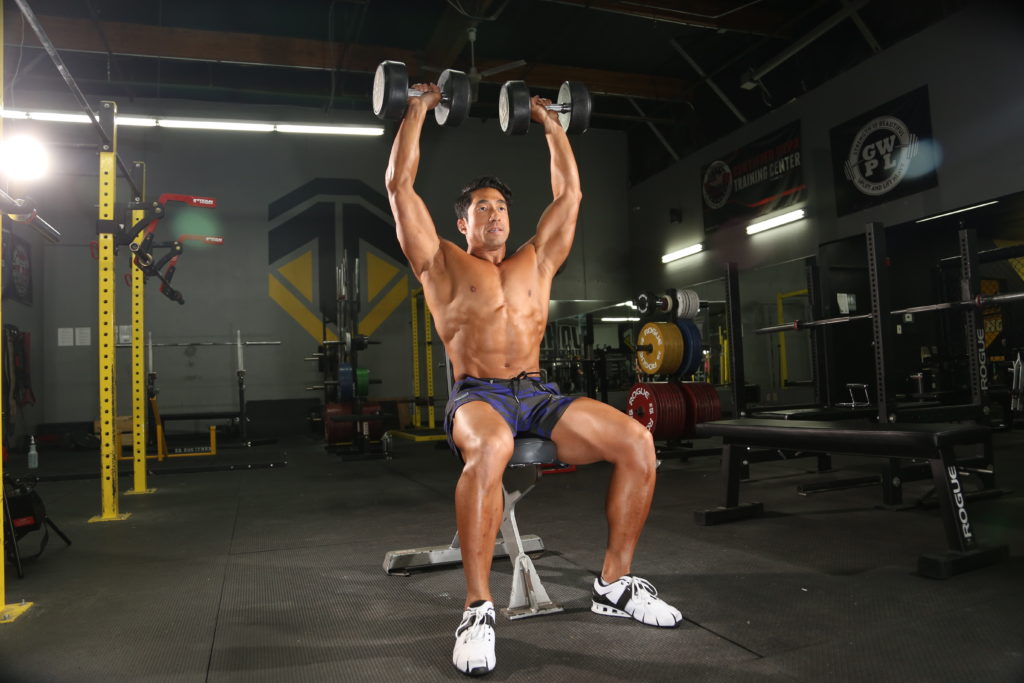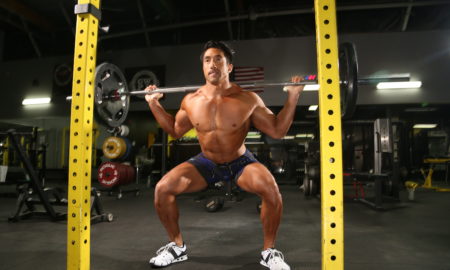

Cardio and weight lifting are two of the most popular forms of exercise that help people lose fat and get lean.
Both these workouts target different body parts and have a different approach in how they aid in weight loss.
Since both of them are effective in their own regard, people tend to be unsure of what to prioritize in their journey of weight loss.
This article seeks to provide a brief outline of the two exercises as well as their benefits so that you can make a well-informed decision about your fitness.

Cardio vs weight training for fat loss
Cardiovascular Exercise
Cardiovascular exercise, also known as cardio or aerobic exercise, refers to any type of exercise that targets the heart.
General examples of cardio include running, jogging, cycling, and water aerobics such as swimming.
Cardio exercises include any form of workout that increases the heart rate.
Along with heart rate, these exercises also increase the respiration rate and tidal volume (depth of inhalation) so that more oxygen can be supplied to the body unit time.
When done for long periods of time, cardio exercises are extremely helpful in keeping the heart and lungs healthy.
Cardiovascular exercises can be classified into 3 main types:

HIIT
HIIT or high-intensity interval training is one of the most efficient exercises for weight loss. It relies on fast-paced hard workouts with a small interval of rest, followed by the same workout again.
Steady-State
Steady-state exercising refers to your traditional jogging, swimming, and cycling. The goal is to exercise at a pace where the heart rate is kept moderately high. Around 120 to 150 bpm is a good figure.
Medium Intensity Intervals
For this kind of workout, you can incorporate any kind of exercise that is not too hard/fast-paced. Keep alternating between an interval of workout and then active recovery (for example stretching).
Weight Training
This form of weight loss relies on resistance training whereby muscles are strengthened using the phenomenon of hypertrophy.
When heavyweights are incorporated into a workout regime, it induces stress on the body. Upon constant lifting, the muscle size increases due to the growth in cell size resulting in muscle hypertrophy.
Weight training is the most effective way of building muscle, improving tone and muscle definition. It has also been evidenced to improve resting metabolism, that is, the number of calories burned at rest.
Therefore, weight lifting contributes to weight loss by burning more calories at rest.
In fact, depending on the form of workout, weight training can also increase your cardiovascular fitness too.
How Many Calories are Lost Through Cardio vs How Many Calories are Lost Through Weight Lifting
Calorie loss through cardio vs. weight lifting depends on numerous factors.
How Many Calories are lost through Cardio?
The amount of calories burned from cardio depends on two factors:-
- Your body weight
- The intensity of exercise you perform
Body Weight
If there are two individuals weighing 160 pounds and 180 pounds each, and they both jog at the same speed for 30 minutes, the 180-pound person will lose more calories in comparison to the 160-pound person. Thus, if you’re heavier you’ll lose more calories in comparison to someone who is lighter.
Intensity of Exercise
The intensity of exercise correlates to the degree of severity of your workout.
Thus, questions like, how fast did you run? How long did you swim? How many different muscle groups did you target in a specified time? can prove as useful indicators to determine the intensity of the workout.
Generally, the greater the intensity of the workout, the more the caloric burn.
How Many Calories are lost through Weight Lifting?
Like cardio, weight lifting also depends on factors like body weight and intensity.
However, the calorie burn in weight training is less compared to cardio, for the same duration of exercise.
For example, riding a stationary bike for 30 minutes burns an average of 210 to 294 calories whereas a 30-minute weight lifting session burns only 90 to 126 calories.
Nevertheless, weight lifting is highly recommended by many fitness trainers as it causes a significant caloric burn after the workout has ended.
This has been proven by something called “excess post-exercise oxygen consumption” or EPOC.
EPOC, also known as oxygen debt, is the amount of oxygen required to restore the body’s metabolic function to normal.
When scientists measured the EPOC in an individual who performed both weight-based and a cardio workout (after proper rest), it was found that the EPOC was higher for weight-oriented workouts.
Hence proven, that not only is weight training helpful in conditioning the tone and shape of your muscles but it can prove more beneficial for weight loss in the long run.
Benefits of Both Cardio and Weight Training
Now coming down to the important question.
Cardio or weight training? Which one should I prioritize for getting leaner?
To put it quite simply, the answer is both. Both cardio and weight training should be incorporated together to see quick and efficient weight loss.
Cardio will help burn fat, improve heart health, lower blood pressure, build endurance, and aid in weight loss recovery. Whereas, weight lifting will help build muscle, strengthen bones and joints as well as promote fat loss in the long run.
If you only rely on cardio, you are likely to get a physique where muscle definition is poor.
On the other hand, if you only rely on weight training, it will help you lose weight but it won’t help you achieve weight loss as rapidly as cardio. Moreover, it may make you look bulkier if your diet is not right.
Another aspect worth emphasizing is being in a calorie deficit. This is important, otherwise, it’s rare that you’ll ever see the results of your hard work.
A calorie deficit should be nothing extreme but nothing too light either. As a general rule, you should aim to cut out 500 calories from your daily calorie intake to notice significant weight loss.
Thus if you’re a woman consuming 2000 calories in a day, you must aim to eat 1500 calories daily in order to drop significant weight- a pound in a week.
Workouts that Incorporate Both
Cardio and weight training can be combined together to maximize fat loss.
While it can be difficult to incorporate two workouts together (especially if you’re more oriented to one kind of workout) it is not entirely impossible to manage the two.
Here are some ways you can incorporate the two.
If you’re someone who likes cardio
Break your workout into several intervals and incorporate breaks. Hence, if you’re planning to run on the treadmill for 40 minutes, break that into 10 or 15-minute intervals.
In the break between the intervals, do some stretching and perform squats using light weights. You can do push-ups, chest presses, or any other muscle targeting exercise that you enjoy- incorporate this into your circuit training regime.
You could also gain cardiovascular fitness from weight training. Do this by reducing the amount of weight and increasing the repetitions unit time.
The sweating and increase in heart rate will give you the benefits of cardio whereas the weights will help add resistance to build muscle.
If you’re someone who likes to lift
Decrease the weight you’re going to lift and increase the reps instead. Hence, if you’re going to lift 100 pounds for 10 reps, replace this with 50 pounds for 15 to 20 reps. This will increase your heart rate which is the ultimate goal of any good cardio workout.
You can also decrease the number of breaks you take or decrease the rest period between workouts. Hence, if you’ve lifted weights and plan to rest for 3 minutes. Replace this with a 45-second rest instead.
All in all, try to increase the reps and decrease the weight. This will ensure that your heart rate is kept elevated and caloric expenditure is optimized.
How to maintain both

A lot of people tend to be confused about how to manage the two workouts and whether to jog before lifting or lift before jogging.
Essentially, both the workouts can be managed provided the three guidelines are met:
- Appropriate recovery time is given
- Form of exercise is maintained
- Diet is taken care of
Recovery time
Recovery is important so that muscles can repair themselves and restock their glycogen stores. By allowing your muscles to recover properly, you can prevent overuse injuries and better reap the benefits of your workout.
Form of Exercise
The proper form of exercise is essential to maintain as this ensures that you’re putting your energy into targeting the muscle group and not wasting it around.
The better your form the faster the results – you can correct your form by asking your trainer to supervise your moves or by recording yourself to see if you’re matching the technique.
Diet
While a calorie deficit is a must, it is also important that you eat foods that build muscle, boost recovery, and aid in metabolism. Try to incorporate more proteins as well as greens, and ditch the carbohydrates.
What to do first?
Normally, starting your workout with cardio and ending the routine with resistance training may slightly prolong your period of recovery. This is because prolonged aerobic activity can compromise one’s ability to lift as it tends to deplete one of their glycogen stores (energy).
However, this is only the case for the first few weeks of starting a new exercise regime. In the long run, it doesn’t matter which one you do first. Our bodies adapt to any order of exercises as long as the exercises are done in a proper manner.
However, when you’re starting off with this new regime, it is recommended to begin with weight lifting and then move on to cardio. This will keep your recovery time short, and give you enough time to adapt to your fitness routine.
It is also wise to follow this order if you’re planning to follow this exercise plan for more than 2 to 3 days a week.
Summary
Both cardio and weight training are important for your fitness. Incorporating the two into your regime will not only result in a lean body but also stronger muscles and joints. This is of course, the right diet, proper exercise form, and recovery time need to be taken care of.






















You must be logged in to post a comment Login